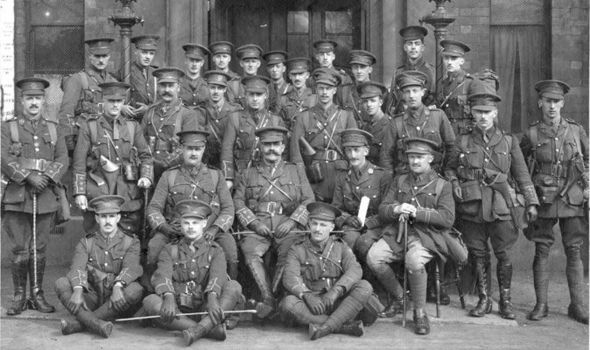There were 28 officers, dressed in pristine uniforms and less than a month after the picture was taken, 2nd Lieutenant Walter Raley was killed by a sniper in France. Shortly after, Captain Harry Clover was killed during the first ever phosgene poison gas attack.
They all served with the 1/5 (Territorial Force) York & Lancaster regiment and were photographed on April 13, 1915, at York Baths, just before going south, where they would be picked up by a troopship and cruised to Boulogne to fight for their country.
The last days of the TF battalion in England can be seen on the Yorkshire Film Archive’s website www.filmedandnotforgotten.com. The YFA is trying to get in touch with people who might have dusty photographs in their family albums, which would help identify the relatives of the soldiers.
Some of the soldiers in the photograph have already been identified with the help of historian Jon Cooksey, who is also the editor of Stand To, the Journal of the Western Front Association. Among the identified ones, there is an officer with a trim mustache, Lt WB Douthwaite, who is seen marching with his men as a woman walks alongside them. He was later on mentioned in dispatches for his courage. In the picture, he can been seen sat down on the ground, on the left side of the photograph, the Express reports.
The first officer to die was Lt Raley, who was killed when he was 21 years old, on May 14, 1915, a month before his brother Captain William Raley lost his life, only a few miles away from where he died. Captain William Raley died aged 30, during a raid on the German trenches, following the death their mother Elizabeth, who is believed to have died of a broken heart.
They were followed by Marcus Goodall, whose father was Canon Goodall of Rotherham. He died during a trench raid on the Somme in July 1916, aged 21. Sergeant Crummock tried to save him and was also awarded with the Distinguished Conduct Medal for his effort, however, his wounds did not allow him to live. His brother, 2nd Lt JHH Goodall, can also be seen in the picture as the tallest man standing in front of the door.
“Almost 100 years after the event it puts a modern audience right there with a volunteer battalion of the British Army in April 1915 as it sets out for its great adventure in the ‘Great War for Civilisation’,” said Mr Cooksey, author of “Images of War Flanders 1915”.
//
